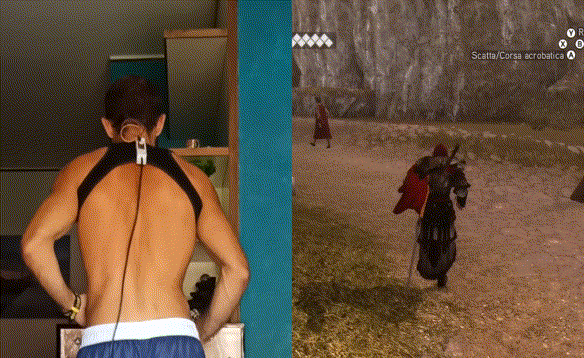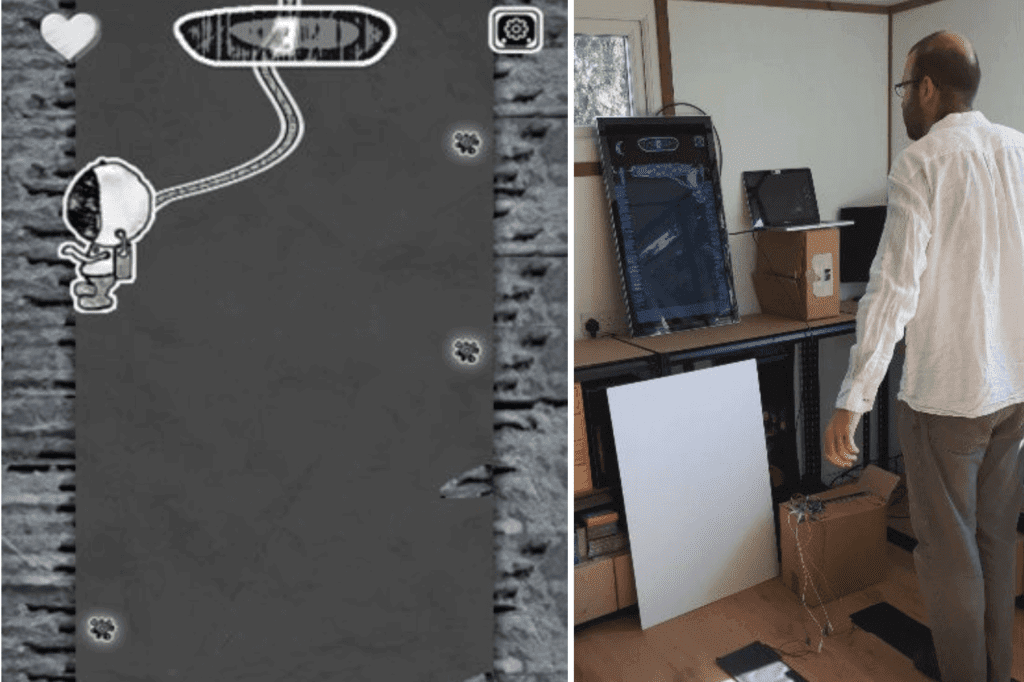Schlagwort: game controller
-

Exercise while you game with this interactive treadmill add-on
Reading Time: 2 minutesMotion-based controls for games have been around for decades, but even with the latest generation of virtual reality headsets, gaming is still done with relatively limited movement unless one has access to an expensive VR walking/running setup. As an effort to get more physical activity in, Iacopo Guarneri has developed a motion-capturing…
-

Coolest controllers ever? Icy gamepads melt in users’ hands
Reading Time: 2 minutesNintendo’s Joy-Con controller system is very innovative and generally well-regarded, with one major exception: stick drift. That’s a reliability issue that eventually affects a large percentage of Joy-Cons, to the frustration of gamers. But what if that was intentional and gamepads were designed to deteriorate in short order? That’s the idea behind…
-

Voice-enabled controller makes video games more accessible
Reading Time: 2 minutesAlmost all modern video games require either a gamepad or a keyboard and mouse, which means that they’re inaccessible to many people with disabilities that affect manual dexterity. Bob Hammell’s voice-enabled controller lets some of those people experience the joy of video games. This is a simplified video game controller with a…
-

Can you become the next Trombone Champ?
Reading Time: 3 minutesThe first Guitar Hero game hit shelves in 2005 and kickstarted the rhythm game revolution. While it wasn’t the first rhythm game, its inclusion of “realistic” guitar controllers changed the industry. It wasn’t long before competitor Rocksmith took things a step further and let players use real electric guitars. But guitars are so common; if you…
-

Playing Elden Ring with a TV remote
Reading Time: 2 minutesArduino Team — April 1st, 2022 In case you’ve been living under a rock and haven’t heard of it, Elden Ring is currently the hottest game in the world. It’s an open world RPG made by From Software — the same company that is infamous for making the incredibly difficult Demon’s Souls, Dark Souls, and Bloodborne games. Elden Ring is…
-

Converting a Fat Cat plushie into a controller for Final Fantasy XIV
Reading Time: < 1 minuteArduino Team — November 26th, 2021 Mounts in the video game Final Fantasy XIV act like how cars or horses do in our world since they allow players to travel around the map much faster than would otherwise be possible. But even better, mounts are ways to express personality and have…
-

Creating a physical game controller with Arduino
Reading Time: 2 minutesCreating a physical game controller with Arduino Arduino Team — September 3rd, 2019 Steven Goodwin wrote a JavaScript game called Space Bounce where a character in a space suit has to jump from one side of a mine shaft to another, collecting roughly star-shaped objects, while avoiding spikes. It’s a simple yet…
-

Xbox One wird noch besser: Erstes System Update im Februar
Reading Time: 2 minutesSystem Update für Xbox One: Erweiterte Funktionalität für die neue Generation wird ab 11. Februar ausgerollt Ab der kommenden Woche werden mehrere Produkt Updates für Xbox One erscheinen. Das Xbox Team fühlt sich sehr geehrt über das umfangreiche Gameplay und die vielen unterhaltsamen Spielstunden, die Fans seit Launch investiert haben. Auch…







